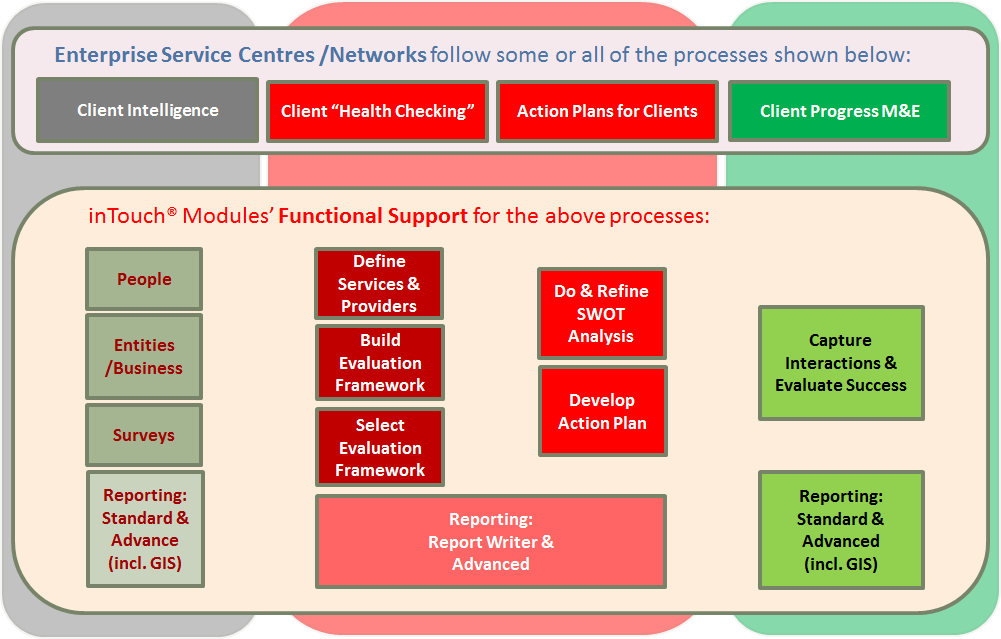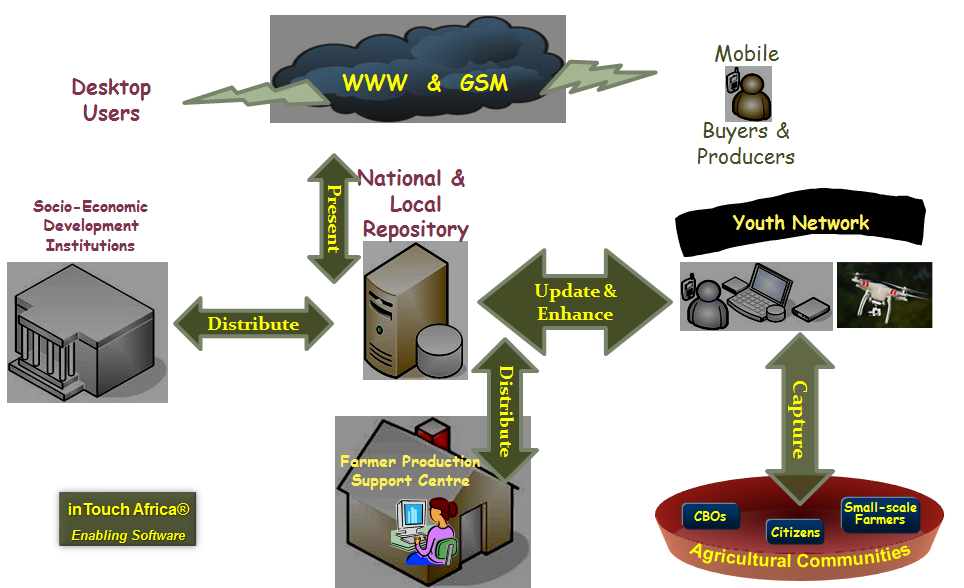
During the years of research in the small enterprise development domain, we became aware of the need for a low-cost, “band-width friendly” software system to support the functioning of these enterprise development initiatives and networks as well as render support to our own social enterprise networks of “community change agents”. We therefore developed a system known as inTouch Africa which support our own and other enterprise (and broader) development activities in the ways shown in the diagram below.

The inTouch Africa® system had been develop to primarily assist service providers (like ourselves!) in the small business and rural development arena to enable and enhance the main categories of services depicted in the diagram above:
- Client Intelligence, i.e. information on the people and institutions they are serving as well as responses by these clients to surveyed issues;
- Client “Health Checking”, i.e. information on the “well-being” of their client base;
- Action planning for clients, i.e. the linking of services and action plans to clients based on the need of the client as derived from the “health check” or SWOT (Strengths, Weaknesses, Opportunities and Threats) analysis; and
- Client Progress Checking, i.e. the monitoring and evaluation (M&E) of the effectiveness of the planned and executed interventions for the clients.
In rural contexts data on formal and informal socio-economic activities is usually inadequate and inaccurate and can not be used effectively for local planning and procurement type of activities. The community agents therefore need the tools, training and support to:
- Survey;
- Promote; and
- Maintain this data and to
- Update a central repository.
Centralised data can be made available for use at:
- Local and traditional authority departments and functions;
- Walk-in and self-help facilities at local authority as well as community level; and
- Over the Internet and WWW to desktop as well as mobile users.
A typical deployment of the inTouch System in support of a rural service network is depicted in the diagram below:


